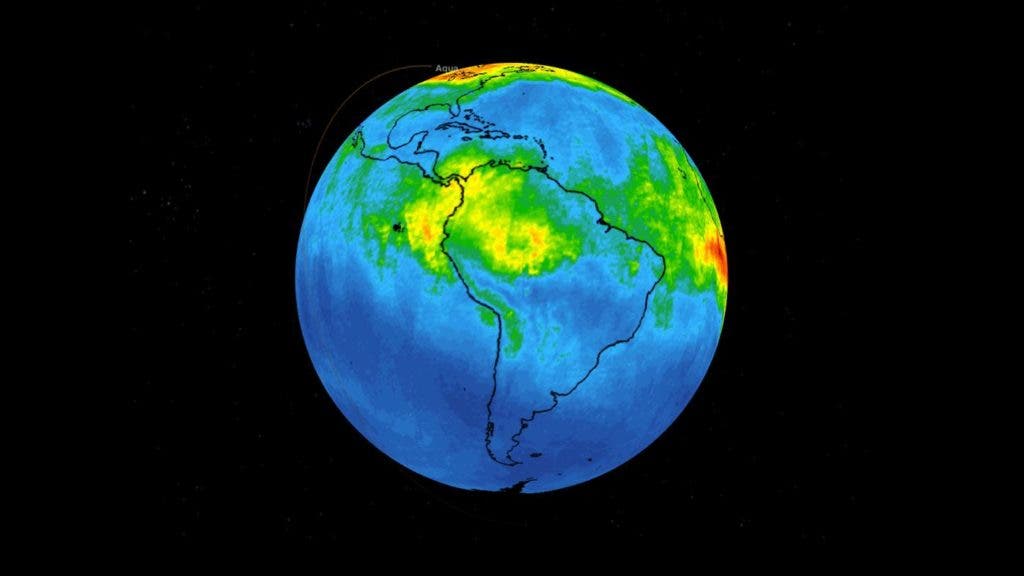The Amazon rainforest is burning, with hundreds of wildfires in Brazil and Bolivia that so far haven’t been stopped. New satellite imagery from NASA shows an enormous cloud of poisonous carbon monoxide rising from the devastation.

The images were taken from NASA’s Atmospheric Infrared Sounder (AIRS) instrument, aboard the Aqua satellite, and show the cloud evolving between Aug. 8 and Aug. 22. It starts first over Brazil, where the majority of the rainforest is located, and ultimately spreads to most of the northern part of South America.
“A pollutant that can travel large distances, carbon monoxide can persist in the atmosphere for about a month,” NASA wrote on its website. “At the high altitude mapped in these images, the gas has little effect on the air we breathe; however, strong winds can carry it downward to where it can significantly impact air quality. Carbon monoxide plays a role in both air pollution and climate change.”
The vast specter changes colors, going from green to yellow to red, which represents a rather large increase in carbon monoxide in the atmosphere. NASA said that green indicates concentrations of approximately 100 parts per billion by volume (ppbv), while yellow is indicative of 120 ppbv and dark red of 160 ppbv.
The normal concentration is considered at 100ppbv, according to the University Corporation for Atmospheric Research. Experiencing a higher level can lead to headache, dizziness, weakness, upset stomach, vomiting, chest pain, and confusion, all flu-like symptoms.
While the recently spotted cloud may float at too high an altitude to pose a serious risk on the ground, it’s not the only airborne hazard released by the ongoing wildfires. Last week, smoke from the fires traveled halfway across Brazil to blanket São Paulo in a midnight-black haze in the middle of the afternoon.
Brazil’s National Space Research Institute, which monitors deforestation, has recorded that the number of fires has risen by 85 percent to more than 77,000 in the last year, a record since the institute began keeping track in 2013. About half of the fires have been in the Amazon region, with many in just the past month.
At a summit in France, the Group of Seven nations pledged $20 million on Monday to help fight the flames in the Amazon and protect the rainforest, in addition to a separate $12 million from Britain and $11 million from Canada. Nevertheless, Brazilian President Jair Bolsonaro has so far been reluctant to accept the funds.






